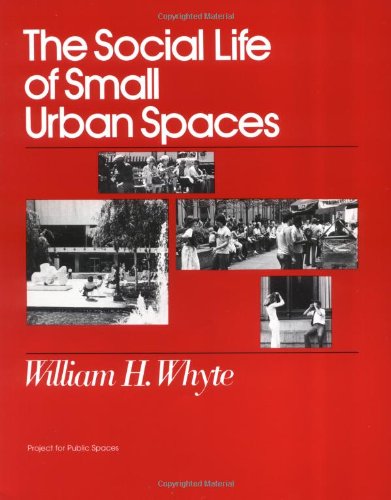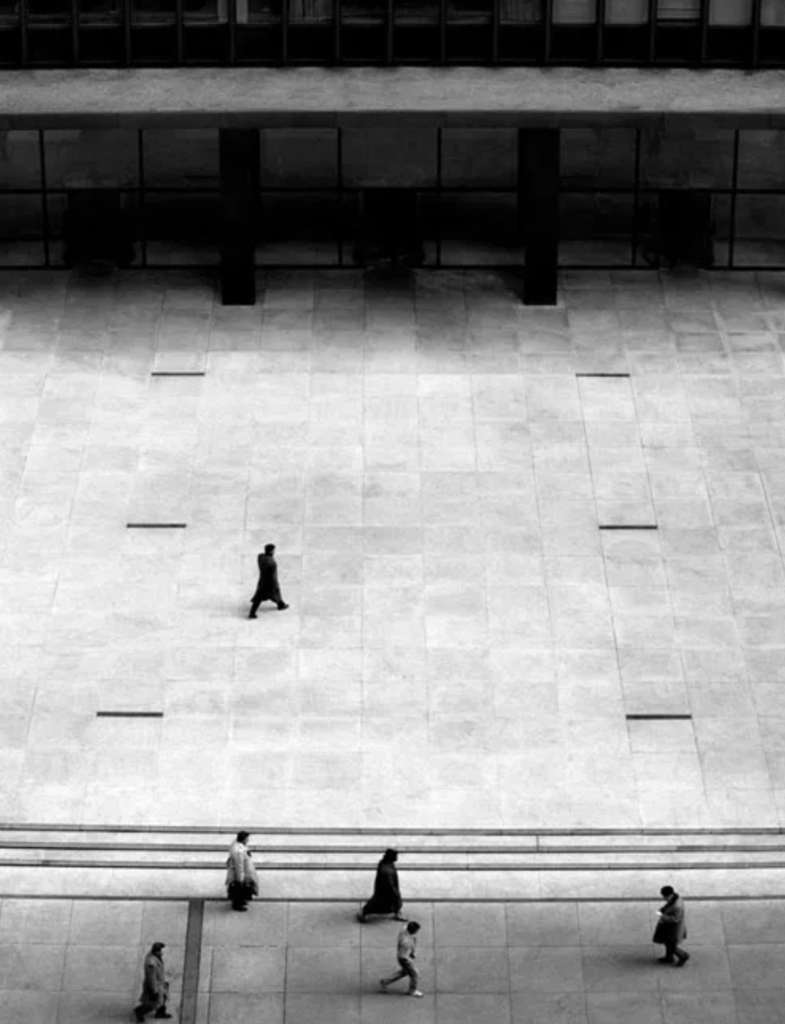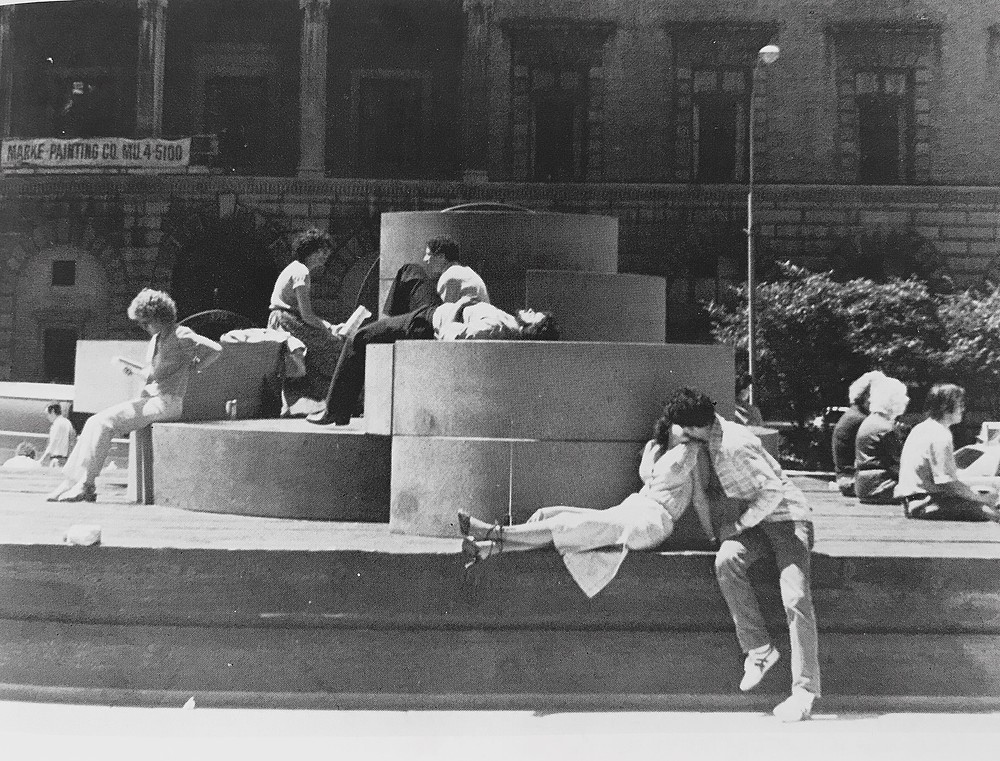When thinking of SoHo, many New Yorkers and visitors rarely associate it with public space, especially in the shadow of our city’s revolutionary park system. SoHo’s robust cast-iron architecture and bustling streets filled with iconic shops point towards a district deprived of traditional large public spaces. Despite its lack of recognizable parks, SoHo is still a very social neighborhood, where friends, family, and strangers come together. Among its retail stores, art galleries, pop-up shops, interactive experiences, and residential, live/work, and office spaces upstairs, the neighborhood’s streets are filled with pedestrians making use of SoHo’s sidewalks and storefronts as shared space. As the city undergoes a historic transformation in light of the COVID-19 pandemic, it is important to appreciate the city’s varied offerings of public space, regardless of form.

In William Whyte’s 1979 documentary, The Social Life of Small Urban Spaces, Whyte widens our understanding of urban space past our initial understanding of greenery and playgrounds. In a whimsical tone, he narrates over rooftop and street-level footage of pedestrians interacting with their urban environment in Midtown Manhattan. Taking note of variables such as weather patterns, where people stop to chat, and how different areas are more successful in serving as public space, Whyte made outstanding observations that influence how we view successful urban space today.
“With a time-lapse camera, we were testing a hypothesis. The sun, we were pretty sure, would be the chief factor in determining where people would sit or not sit… Now, just after 12, they begin to sit… right where the sun is. I was enormously pleased. What a perfectly splendid correlation.”


Appreciating informal areas for respite, such as those found in SoHo, has illuminated our city’s incredible capacity for social interaction. In a neighborhood that is considerably one of the more heavily trafficked in the city, a small urban public space such as a side street, a street corner, a stoop, or a storefront has created hidden social opportunities that we would not recognizably appreciate if it weren’t for Whyte’s ingenuity. The Social Life of Small Urban Spaces emphasizes the importance of bustling sidewalks and how added amenities can attract activity. With pedestrians shuffling between SoHo’s various shops and activities, the walkable neighborhood has proven to be resilient during these hard times, attracting old and new visitors alike. The pandemic has lead the City to rethink how to use public spaces to improve the public space experience for people by providing more space for people to walk, cycle, gather and shop through new programs such as Open Streets, Open Restaurants and Open Culture.
Watching the documentary or simply flipping through Whyte’s book can bring pure joy to any New Yorker. Its vintage, yet applicable charm certainly never gets old!
The physical copy of The Social Life of Small Urban Spaces is available for purchase via the Project for Public Spaces and the documentary is available online.